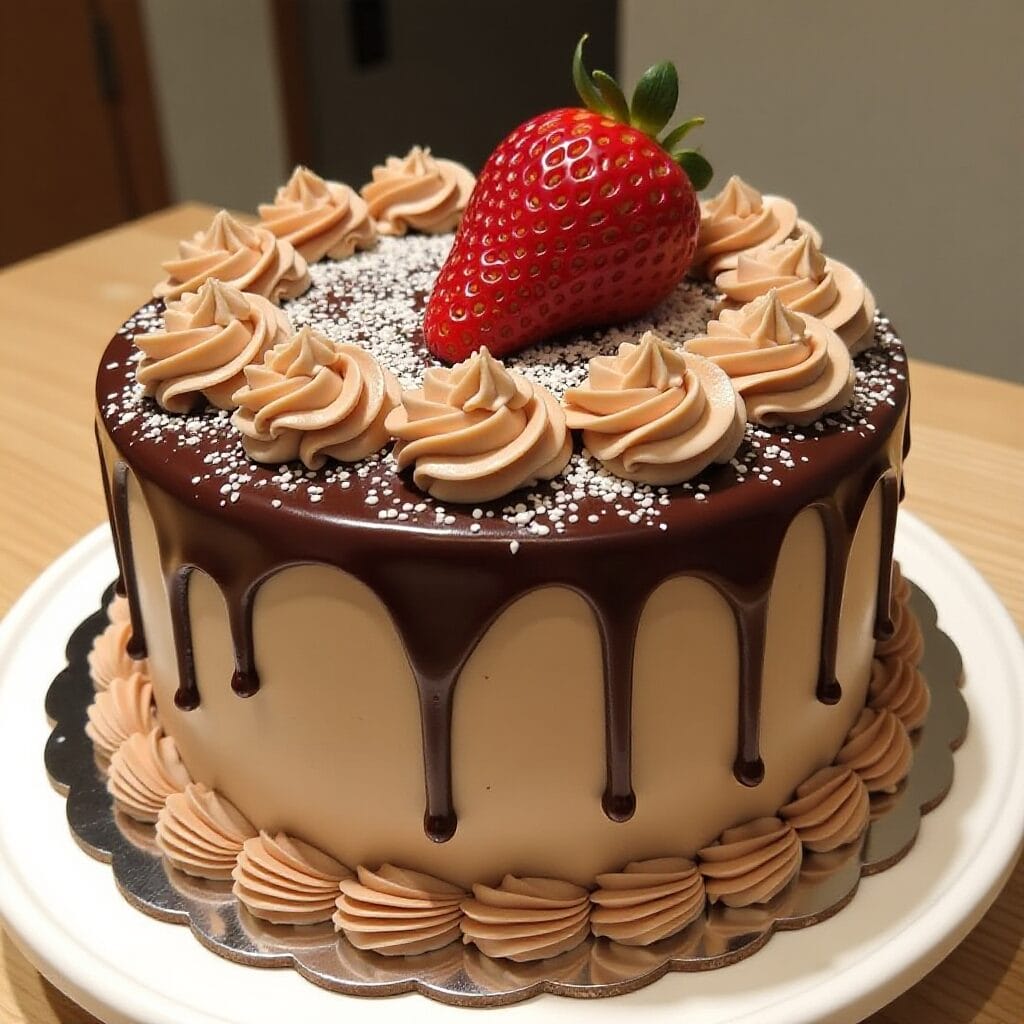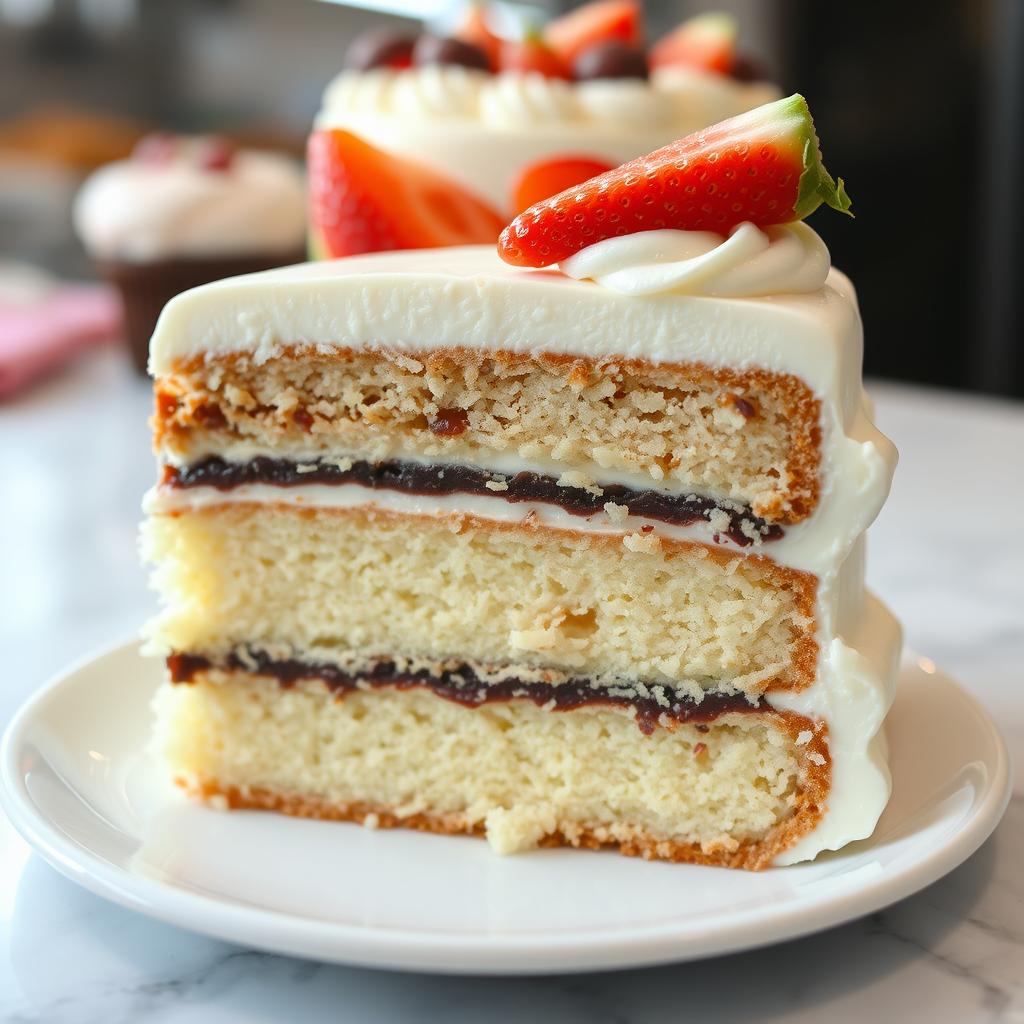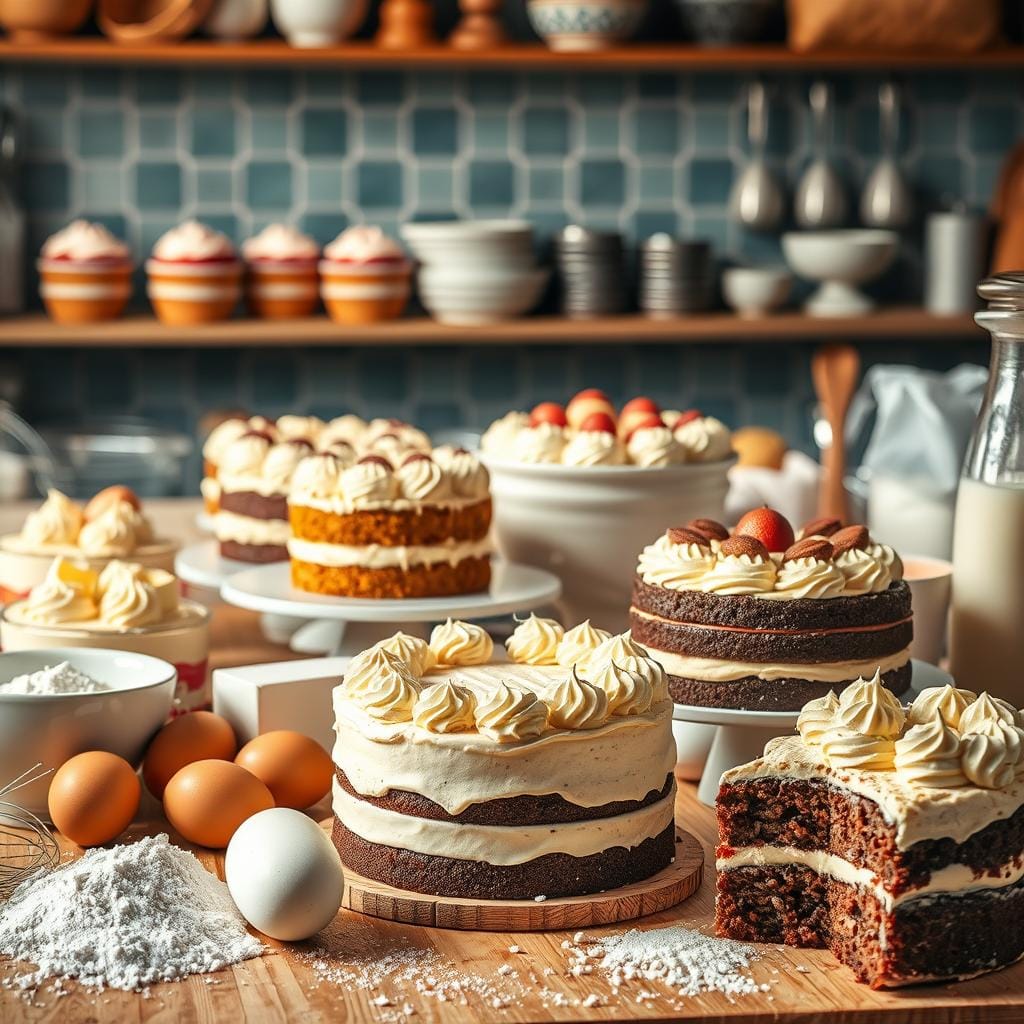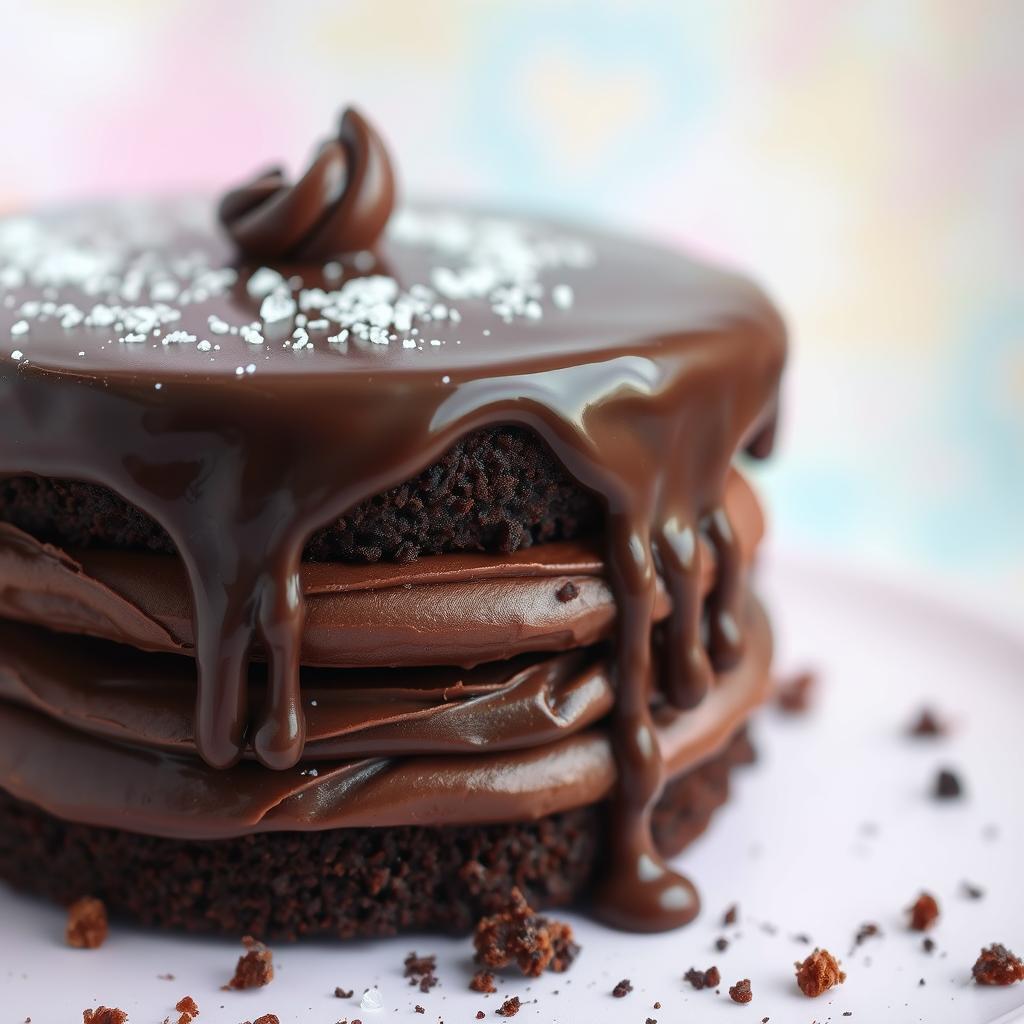How do bakeries get their cakes so moist? Ever taken a bite of a bakery cake and felt it melt in your mouth? The secret to these moist treats isn’t luck, but the skill of pastry chefs who perfect their craft. As a cake lover, I’ve always wondered how they achieve such tenderness. Let’s uncover the science and techniques behind these deliciously moist cakes.

Key Takeaways
- Understand the science behind moisture retention in cakes, including the role of proteins, starches, and chemical reactions.
- Discover the essential ingredients and professional mixing techniques that bakeries use to maximize cake moisture.
- Learn the temperature control secrets and storage methods that help bakeries maintain the perfect level of moisture.
- Explore common mistakes that can lead to dry, crumbly cakes and how to avoid them.
- Gain insights into the specialized tools and equipment used by bakeries to ensure consistently moist cakes.
Understanding the Science Behind Perfect Cake Moisture
Making the perfect cake is an art that needs the right ingredient ratios and baking techniques. Let’s explore the science behind moist cakes.
Role of Proteins and Starches
Proteins and starches are key to the cake texture. Eggs and flour proteins build structure. Flour starches soak up and hold moisture. Finding the right balance is crucial for the perfect cake texture.
Chemical Reactions During Baking
When baking, many chemical reactions happen that affect moisture. The Maillard reaction between sugars and amino acids adds flavor and color. Sugar caramelization also improves the cake texture.
Temperature Impact on Moisture Retention
Temperature is vital for keeping cakes moist. High temperatures can dry out the outside, making it tough. Lower temperatures bake more evenly, resulting in a moist, tender crumb.

“Understanding the science behind baking is the key to consistently producing moist, flavorful cakes.”
Knowing about proteins, starches, chemical reactions, and temperature helps bakers. This knowledge is the base for making delicious, moist cakes that please everyone.
How Do Bakeries Get Their Cakes So Moist?
Bakeries work hard to make their cakes moist and delicious. They pick the right ingredients and use special techniques. This is how they get their cakes to be so moist and tasty.
Bakeries balance dry and wet ingredients carefully. They mix flour, eggs, oil, and liquids just right. This balance keeps the cake from getting too dense or dry.
They also use ingredients like buttermilk, yogurt, and fruit purees. These add flavor and help keep the cake moist. Even after baking, the cake stays soft and tender.
Getting the baking temperature and cooling right is key. Bakers use special oven settings and steam to bake evenly. This helps the cake stay moist.
“The key to a truly moist cake is all in the details – from the ingredient ratios to the baking temperature and time. Bakeries have perfected these techniques through years of experience and experimentation.”
By using these secrets, bakeries make cakes that everyone loves. Home bakers can also make moist cakes by following these tips.

| Ingredient | Role in Moisture Retention |
|---|---|
| Buttermilk | Adds richness and tenderness |
| Yogurt | Enhances moisture and texture |
| Fruit Purees | Contributes natural sweetness and moisture |
Essential Ingredients for Maximum Moisture Retention
To get a moist cake, you need the right mix of ingredients. The fresh ingredients and the ingredient ratios are key. Each part is important for keeping the cake moist while it bakes.
Types of Fats and Oils
The fat or oil you pick can really affect how moist your cake is. Use butter, vegetable oil, or shortening. These help keep the cake moist during baking and cooling.
Liquid Components Selection
It’s important to pick the right liquids for your cake. Milk, water, or fruit juices add moisture and flavor. They make the cake soft and tasty.
Sugar’s Role in Moisture Control
- Sugar makes the cake tender and moist.
- It also keeps moisture in, so the cake doesn’t dry out.
- Getting the sugar and dry ingredients just right is key for moisture.
By choosing and mixing these ingredients carefully, bakers can make cakes that are moist and delicious. These cakes will please everyone who tries them.
“The secret to a perfectly moist cake lies in the ingredients you choose and how you use them.”
| Ingredient | Role in Moisture Retention | Best Practices |
|---|---|---|
| Fats and Oils | Traps and holds onto moisture | Use butter, vegetable oil, or shortening |
| Liquids | Adds moisture and contributes to texture | Choose milk, water, or fruit juices |
| Sugar | Tenderizes and attracts/retains moisture | Balance sugar levels with other dry ingredients |
Professional Mixing Techniques and Equipment
Getting the perfect cake texture starts with learning professional baking techniques. Bakeries use special mixing methods and top-notch equipment to make their cakes moist and tasty. Let’s uncover their secrets.
Mixing is key to keeping cakes moist. Skilled bakers know how to mix ingredients right. They use mixers with adjustable speeds and special paddles to mix gently. This avoids making the cake tough and dry.
Bakeries also use big stand mixers, planetary mixers, and dough kneaders. These machines mix the batter well. They also add air, making the cake light and keeping it moist.
- Proper mixing techniques, like the creaming method, shape the cake’s structure and texture.
- Commercial-grade mixers with adjustable speeds and special paddles help control the mixing.
- Adding air to the batter is crucial for a moist and tender cake.
By learning these bakery secrets, bakers can make cakes that are always moist and delicious. This keeps customers coming back for more.
“Careful mixing is the foundation for a perfectly moist cake. It’s a skill that takes time to hone, but the results are worth it.”
– Renowned Pastry Chef, Jane Doe
Temperature Control Secrets During Baking
Getting the perfect moisture in cakes is more than just the right ingredients. It’s also about controlling the temperature during baking. Bakers who master oven settings, steam, and cooling can make cakes that are moist and delicious.
Optimal Oven Settings
The right oven temperature is key to keeping cakes moist. Baking too hot can dry out the inside. Baking too low can make cakes soggy. The trick is to use baking techniques that heat the oven slowly.
Steam Integration Methods
Adding steam to the oven can make cakes even better. It keeps the outside from drying out too fast. Bakeries use steam injectors or hot water pans to add moisture. Trying different ways to control humidity can help achieve that perfect texture.
Cooling Process Management
After the cake comes out of the oven, it’s still important to keep it moist. Cool cakes slowly using racks, boxes, and controlled environments. This helps them stay moist without drying out.
| Oven Setting | Steam Integration | Cooling Process |
|---|---|---|
| Gradually increase temperature to bake interior evenly | Use steam injectors or hot water pan to maintain humidity | Utilize cooling racks, cake boxes, and humidity control |
By learning these temperature control secrets, bakers can make moist, tasty cakes. The right oven settings, steam, and cooling are the secrets to success.
“Proper temperature control is the unsung hero of moist, tender cakes. Get it right, and you’ll have customers raving about your baking prowess.”
Storage and Humidity Management in Bakeries
Keeping baked goods moist is a tricky task. Professional bakeries have learned how to control humidity. This is the secret to their moist cakes.
Humidity control is crucial for keeping cakes moist. Bakeries use special tools like dehumidifiers and humidifiers. These tools help keep the air’s moisture just right, making cakes moist and fresh.
Bakeries also focus on how they store cakes. They use airtight containers or domes to protect cakes from drying air. Some even vacuum-seal their cakes to keep them moist longer.
| Humidity Control Techniques | Cake Storage Methods |
|---|---|
|
|
By carefully managing humidity and storage, bakeries keep cakes moist. This makes every bite a delight for customers. These bakery secrets are what make their cakes stand out.
“The true mark of a great bakery is their ability to maintain the perfect moisture level in their cakes, even days after baking. It’s a testament to their dedication and attention to detail.”
Common Mistakes That Lead to Dry Cakes
Making cakes just right can be tricky. Even skilled bakers can make dry cakes sometimes. Knowing what goes wrong is key to baking moist, tender cakes that everyone loves.
Measuring Errors to Avoid
Getting the right amounts of ingredients is crucial. Too much flour or not enough eggs can make cakes dry. Always follow the recipe and use the right tools to get it just right.
Timing-Related Issues
- Overbaking: Too long in the oven dries out cakes.
- Underbaking: Taking cakes out too soon makes them dense.
- Improper cooling: Quick or wrong cooling also dries cakes out.
Temperature Control Mistakes
Keeping the oven at the right temperature is key. Too hot and the outside dries out before the inside is done. Too cool and it takes too long, drying out. Use an oven thermometer to get it right for the best cake texture.
“Mastering the art of moist, tender cakes requires attention to detail at every stage of the baking process.”
| Common Mistake | Potential Impact | Solution |
|---|---|---|
| Inaccurate Measurements | Dry, dense crumb | Use proper measuring tools and carefully follow recipe instructions |
| Overbaking | Dry, tough texture | Monitor baking time and use an oven thermometer |
| Improper Cooling | Loss of moisture | Allow cakes to cool gradually at room temperature |
Professional Tools and Equipment for Moisture Control
Professional bakeries use special tools to make cakes moist. They use advanced baking techniques and precise equipment. These tools are key to keeping cakes moist and tasty.
A moisture meter is a must-have. It lets bakers check the cake’s moisture. This helps them adjust the baking to keep the cake just right. They also use humidity-controlled storage units to keep cakes moist after baking.
Professional bakeries also use steam-injected ovens and precise temperature controls. These tools help create the perfect baking environment. They keep the cake moist by preventing moisture loss during baking.
Choosing the right ingredients and managing temperature and humidity are crucial. The tools and equipment in professional bakeries are essential. They help make cakes moist, tender, and irresistible.
“The right tools make all the difference in the world when it comes to baking techniques and bakery secrets for moist, delicious cakes.”
Conclusion
In this article, we’ve looked into how bakeries make their cakes so moist. We’ve covered the science of keeping cakes moist and the importance of ingredients and mixing. The secret to moist cakes is in the details.
By using the tips from this article, you can make cakes as moist as those from bakeries. These baking techniques work for both home bakers and professionals. They will help you improve your cake moistness.
So, how do bakeries get their cakes so moist? It’s all about understanding baking science and controlling ingredients and temperature. By mastering these baking techniques, you’ll make cakes that everyone will love.

